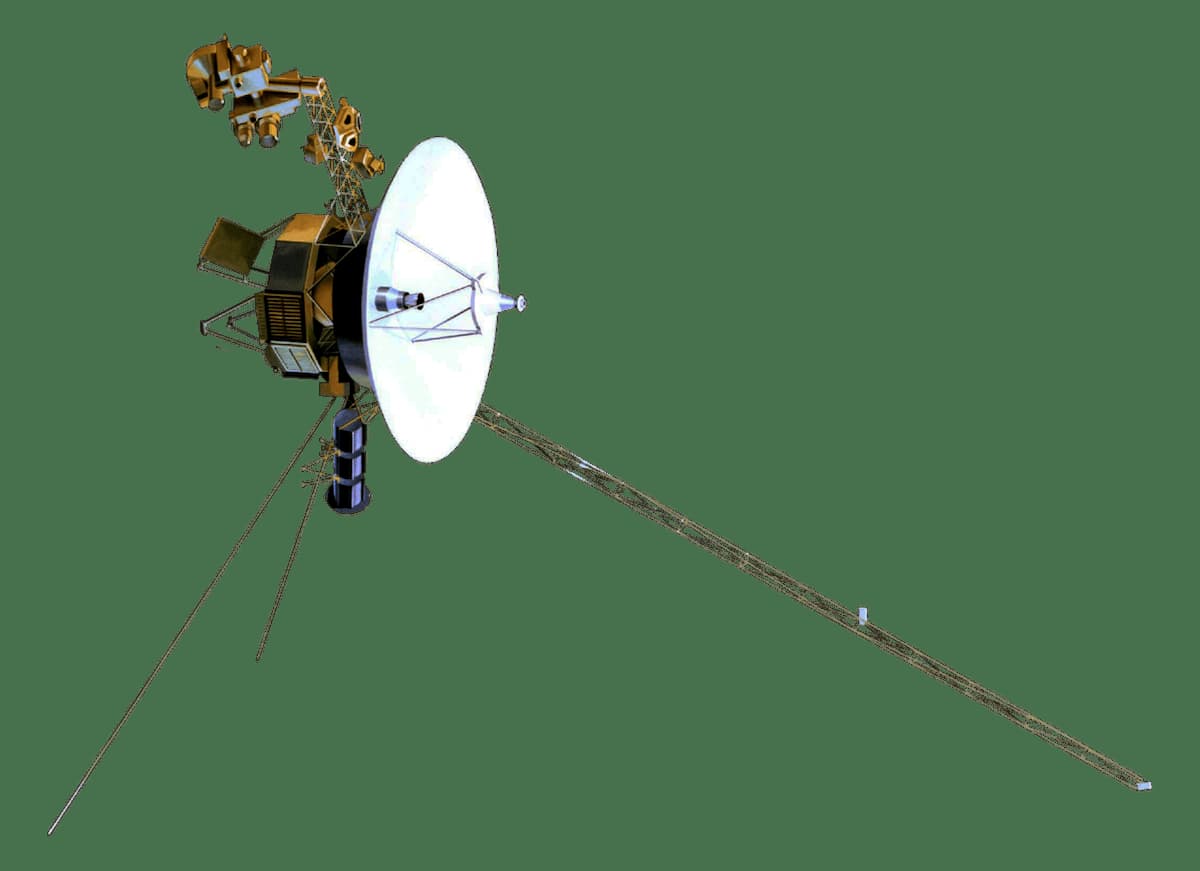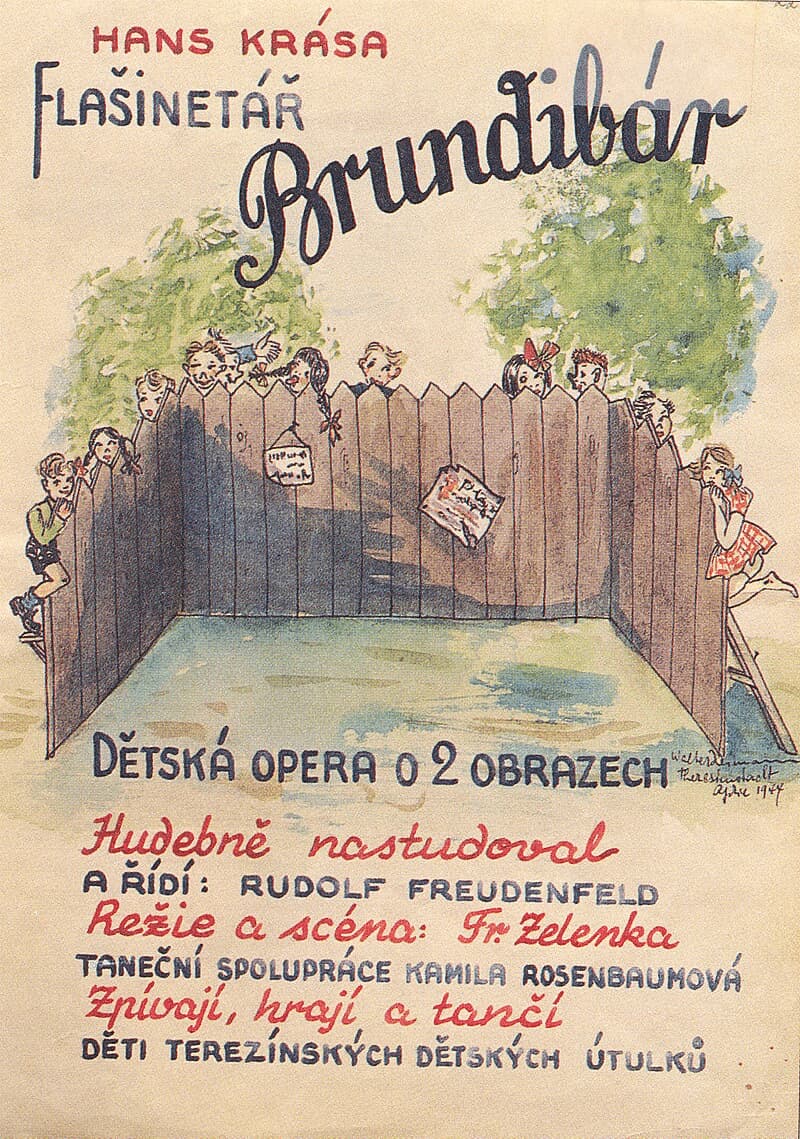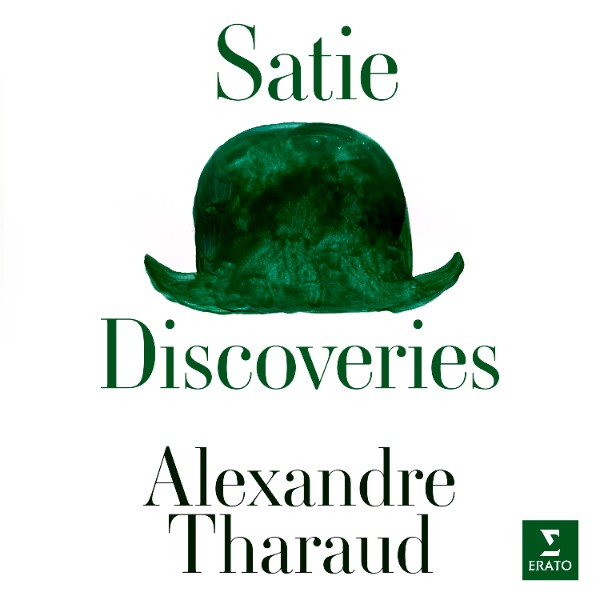American composer Gerald Cohen took two 20th-century musical phenomena and created two thoughtful works about them. The two phenomena represent the best and the worst in the human race: the Voyager space program and Nazi model concentration camps.

Gerald Cohen
Voyager 1 and Voyager 2 were launched in 1977 and have been on their way for over 46 years. Voyager 1 visited Jupiter and Saturn and then continued its outward journey. Voyager 2 visited Jupiter and Saturn as well as Uranus and Neptune. Voyager 1 and 2 included 2 identical phonograph discs containing ‘sounds and images selected to portray the diversity of life and culture on Earth’. The Voyager spacecraft toured the heliosphere (the extent of the sun’s solar wind) before breaking out into interstellar space, which it achieved in 2018.

Artist’s rendering of the Voyage crafts
The Voyager Golden Discs contained greetings to unknown listeners in 55 languages, ‘sounds of the Earth’ from animals to the wind to volcanoes, the brainwaves and heartbeat of a human, and 90 minutes of music from around the world.
Western classical music included music by Holborne, Bach (3), Mozart, Beethoven, Stravinsky in its classical line (there was also blues, rock, Indian raga, and music by Native Americans, Pacific Islanders, Azeri, and other traditional cultures).
With all that as background, Cohen picked three pieces for inspiration: ‘: I chose a Beethoven string quartet (Cavatina), an Indian raga (Bhairavi), and a Renaissance dance (Galliard), weaving them together in a composition that celebrates humanity’s quest to explore the universe, and the power of music to express the rich emotions and cultures of human life’. He wasn’t trying to represent the Voyagers’ travels through space, but rather, the message of the Golden Disc and how it was a message of who humans were in 1977.
Movement three, based on a work by Antony Holborne (fl. ? 1584–1602) for lute, ‘The Fairy Round’, a galliard dance with elaborate divisions on the melody. Cohen said ‘It bounds between many different characters as it explores that dance, and I think of it as both the spacecraft “dancing” its way on its journey, and also the planets and moons themselves in a great cosmic dance’.
Antony Holborne: The Fairy Round (Christopher Wilson, lute)
In his work Voyager, Cohen seems to take us out of the comfortable Renaissance room with lute and puts us in a more technical space. Performed by the Cassatt Quartet, with whom Cohen has worked for many years, with the addition of Narek Arutynian on clarinets, we hear Holborne’s cheerful melody change character into something more urgent, more pressing, and, above all, not at all dance-like.

Cassatt Quartet (Photo by Dario Acosta)
Gerald Cohen: Voyagers – III. Galliard
His string quartet Playing for Our Lives was written in 2012 for the Cassatt Quartet for a program of music by composers who had been held at the Terezín concentration camp when they asked for a work that could be a contemporary memorial and tribute to those who created and lived in the camp. The camp, Theresienstadt, near Prague, functioned as a waystation for those headed for the death camps such as Auschwitz. Using the camp as a false model to counter what was regarded as Western propaganda about the inhumanity of the German concentration camps, the camp, which held many artists, had a rich cultural life, there was an orchestra, several choirs, a jazz band, operas were written to be performed at Theresienstadt, and the Nazi’s filmed them all. Beyond music, there were artists, a Central Library, and it all worked until the fall of 1944, when most prisoners were transported and killed.
In his work, Cohen uses the Yiddish folk song Beryozkele (Little Birch Tree), a lullaby from Hans Krasa’s opera Brundibar, and excerpts from Verdi’s Requiem, all performed at Theresienstadt. The third movement, which uses Verdi, captures the ‘passion, anger, and quiet mourning of the Requiem’.

Walter Heimann: Poster for a performance of Brundibár, Theresienstadt, 1944 (Yale)
Gerald Cohen: Playing for our Lives – III. Dies Irae
The final track on the recording is Preludes and Debka for the unusual combination of trombone and string quartet. The work is a kind of reverse theme and variations: the preludes form the variations before we get the theme in the debka, a Middle Eastern dance, often done as a circle dance. The Cassatt Quartet is joined by Colin Williams on trombone.
The recording poses interesting questions: the two major multi-movement works are all based on others’ music, but in creating his own versions of them, particularly as we are separated from the originals by both time and distance, does Cohen enable us to hear the music in a different way? When the power and glory of Verdi’s Dies irae is reduced to a small angry string quartet can we get closer to it than to a large orchestra and chorus? I think he’s been entirely successful in portraying both the close majesty of space and the confined misery of Theresienstadt. Music provided an escape for the prisoners, albeit only temporarily.

Gerald Cohen: Voyagers (Cassatt String Quartet and other). Innova Records (innova 090).
For more of the best in classical music, sign up for our E-Newsletter

